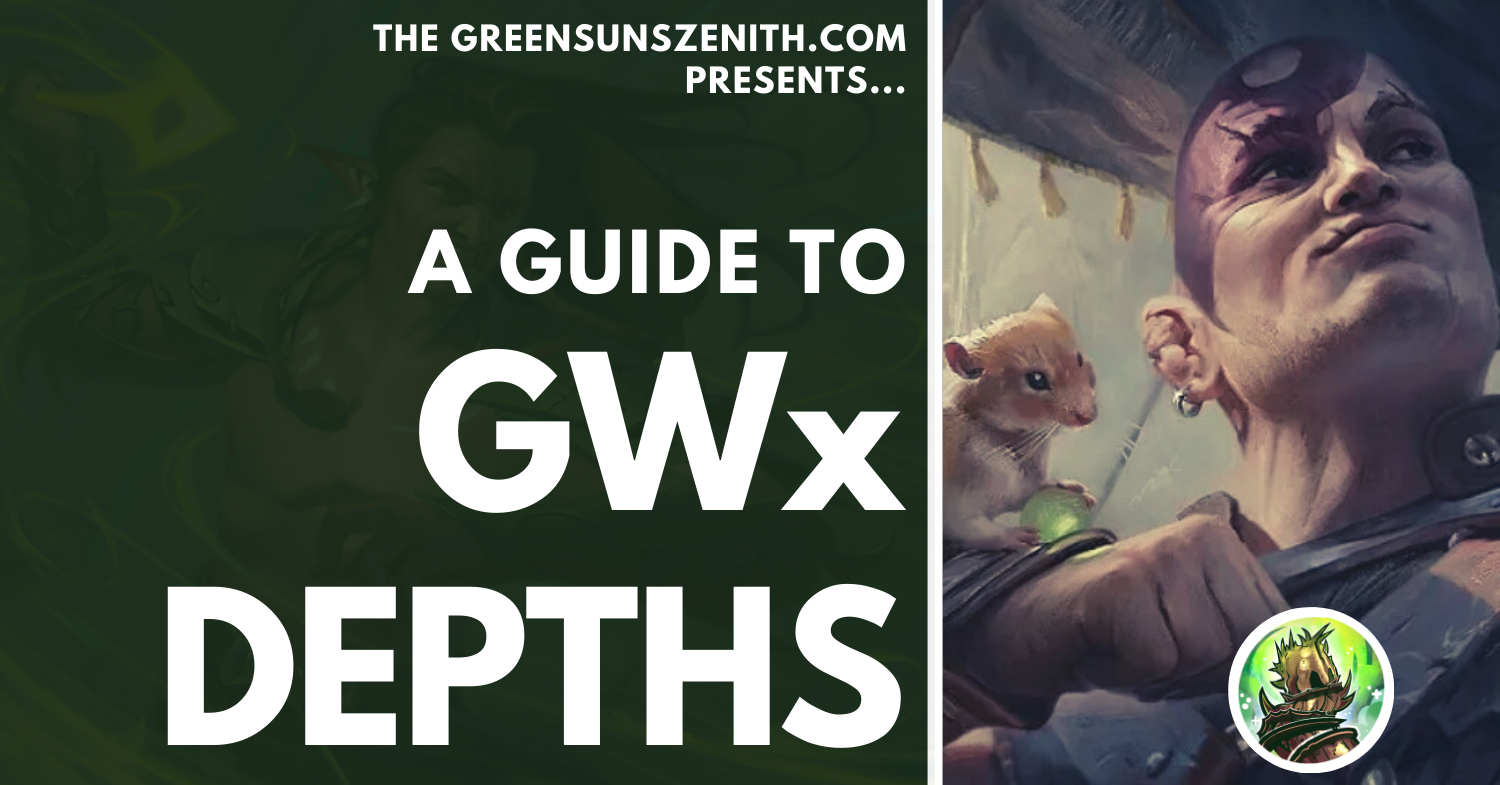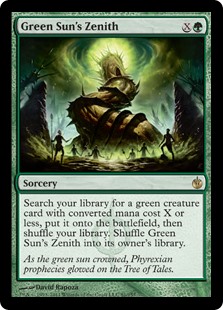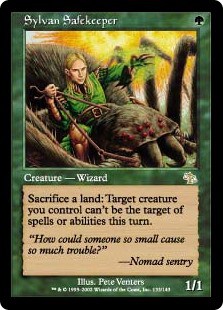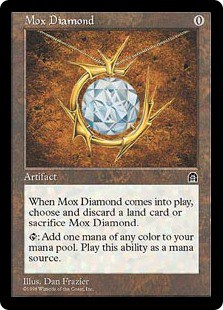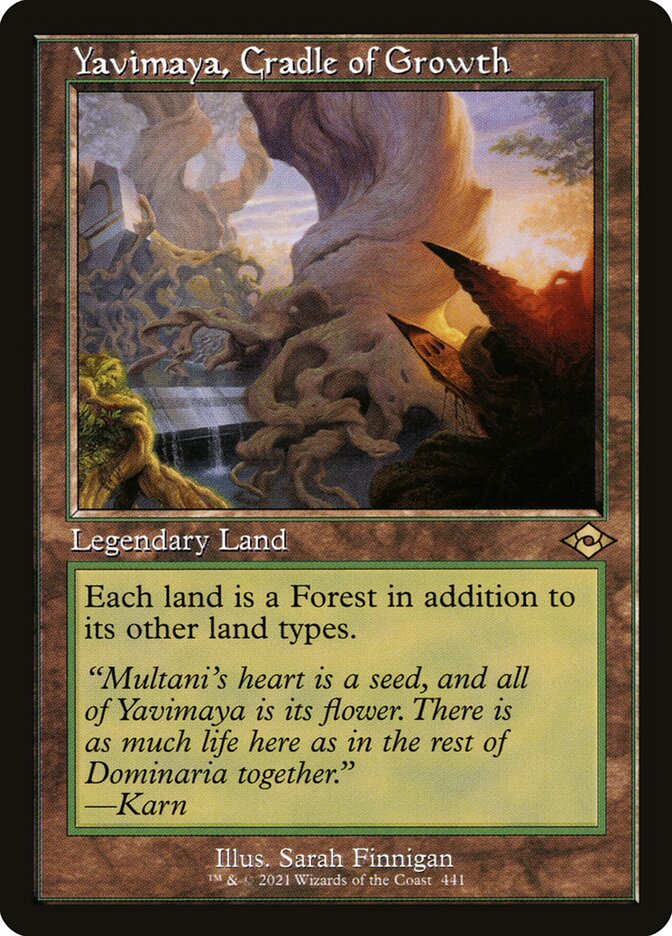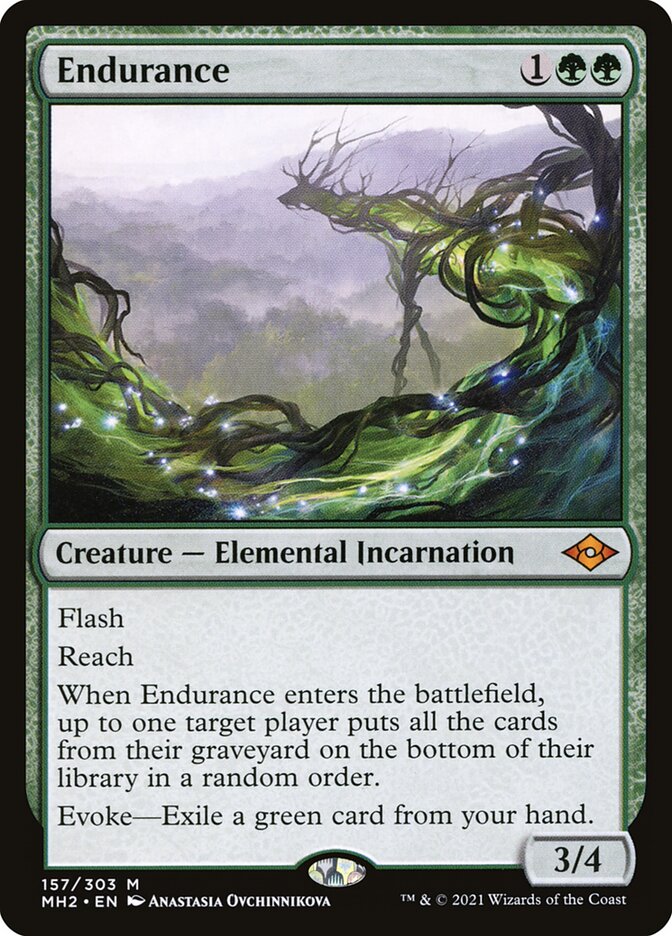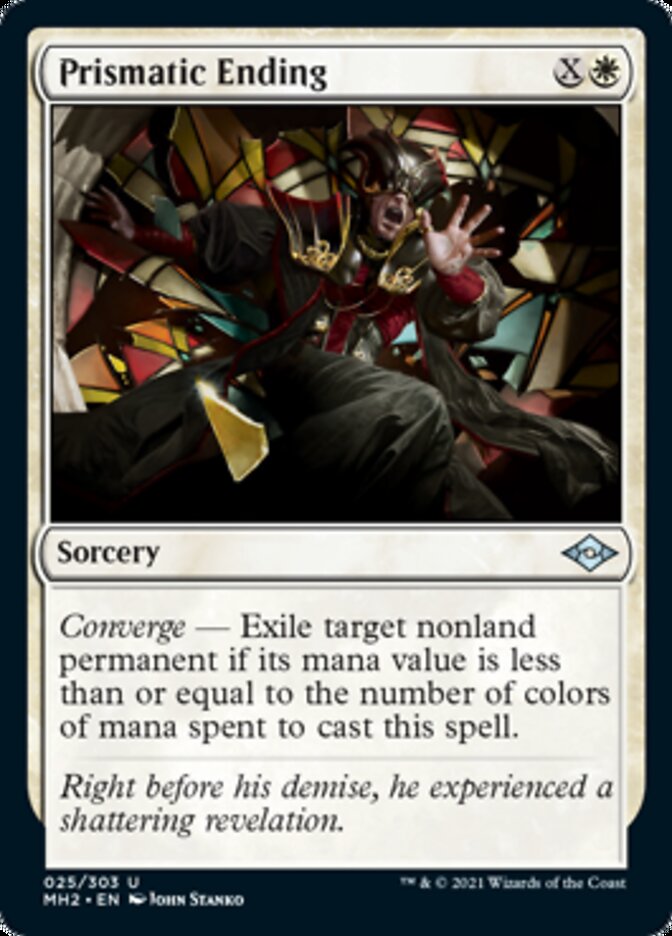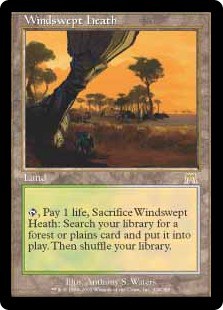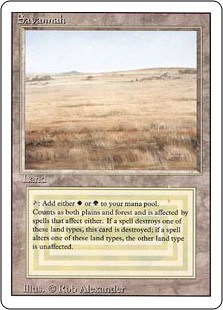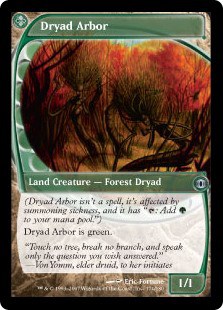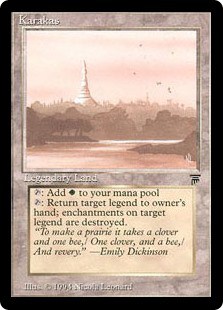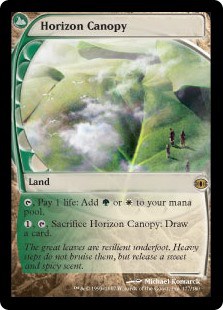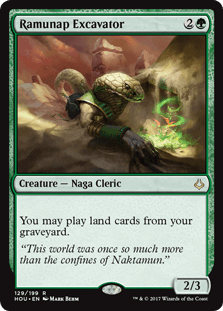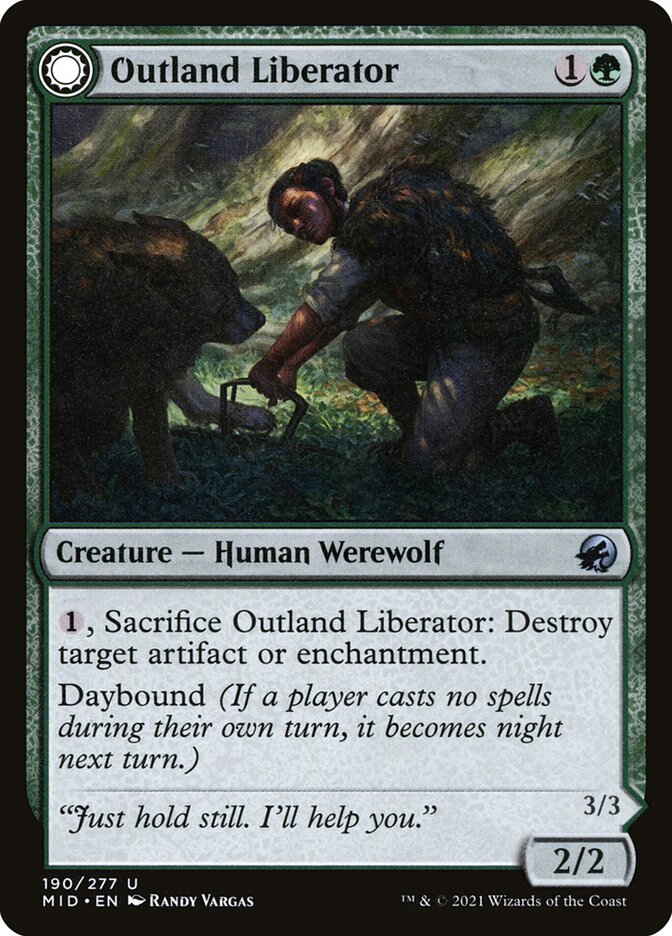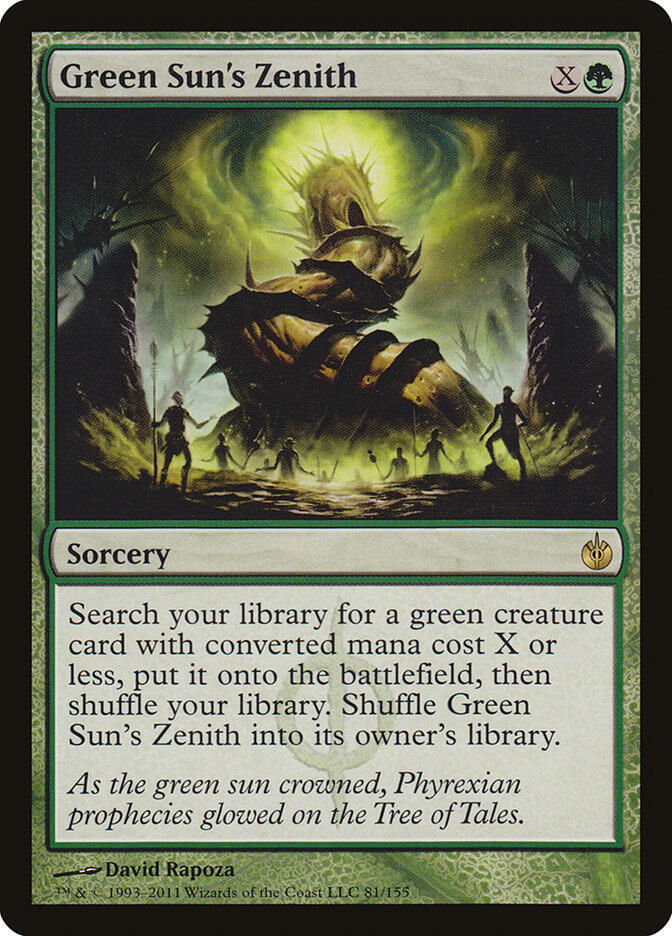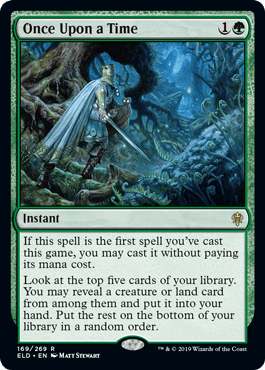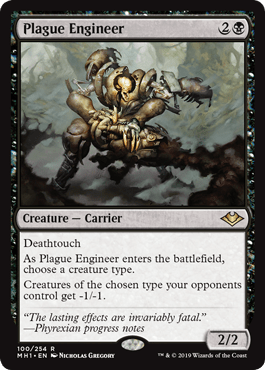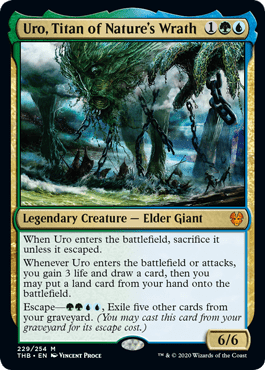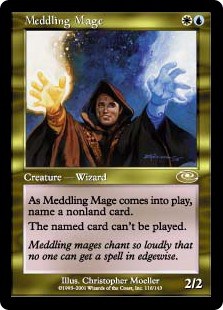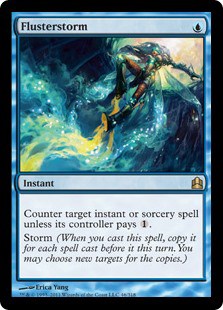Quick links
Naya Depths Discord | 2022 Sideboard Guide for Naya Depths
Table of Contents
GW/Naya Depths in 2022
i. What is Green-White (GW) Depths?
ii. Dark Depths & Thespian’s Stage combo
iii. Is GW Depths an expensive deck?
iv. Origins of Green-White Depths
v. Why play GW Depths over GB Depths?
vi. Modern Horizons 2’s impact on Green White Depths
vii. What is a good starting point for building GW Depths?
viii. How to build GW Depths in 2022
ix. What are GW Depths good matchups?
x. What are GW Depths bad matchups?
xi. GWx Depths versions
xii. Abzan Depths
xiii. BANT Depths
xiv. Naya Depths
xv. Sideboarding with GW Depths
xvi. GW Depths Tips & Tricks
xvii. GW Depths FAQs
xviii. Recent notable finishes & decklists
xix. GW Depths Coverage & Resources
xx. Conclusions & What to Play in 2022
Naya Depths in 2025
Top 2025 Finishes for GWx Depths
September | 2nd Legacy Challenge | Sol-e22558
September | 10th Legacy Challenge | Sol-e22558
September | 10th Legacy Challenge | CruetusNex
August | 9th Legacy Challenge | Sol-e22558
July | 4th Legacy Challenge | SuperCow12653
July | 6th Legacy Challenge | Sol-e22558
July | 2nd Legacy Challenge | SuperCow12653
July | 5th Legacy Challenge | Sol-e22558
July | 2nd Legacy Challenge | SuperCow12653
June | 2nd Legacy Challenge | SuperCow12653
June | 2nd Legacy Challenge | SuperCow12653
June | 2nd Legacy Challenge | SuperCow12653
May | 4th Legacy Challenge | SuperCow12653
Naya Depths in 2024
Why play GW Depths? The deck has resilience.
Here’s a great example of how Legacy Maverick can come back from any potential issue including what look to be unwinnable situations:
Where is Green-White / Naya Depths in 2022?
2022 has been a huge year for Naya Depths with a plethora of impressive finishes with the archetype (seen at the bottom of this guide). It’s also had a recent boost with the printing of Minsc & Boo, Timeless Heroes.
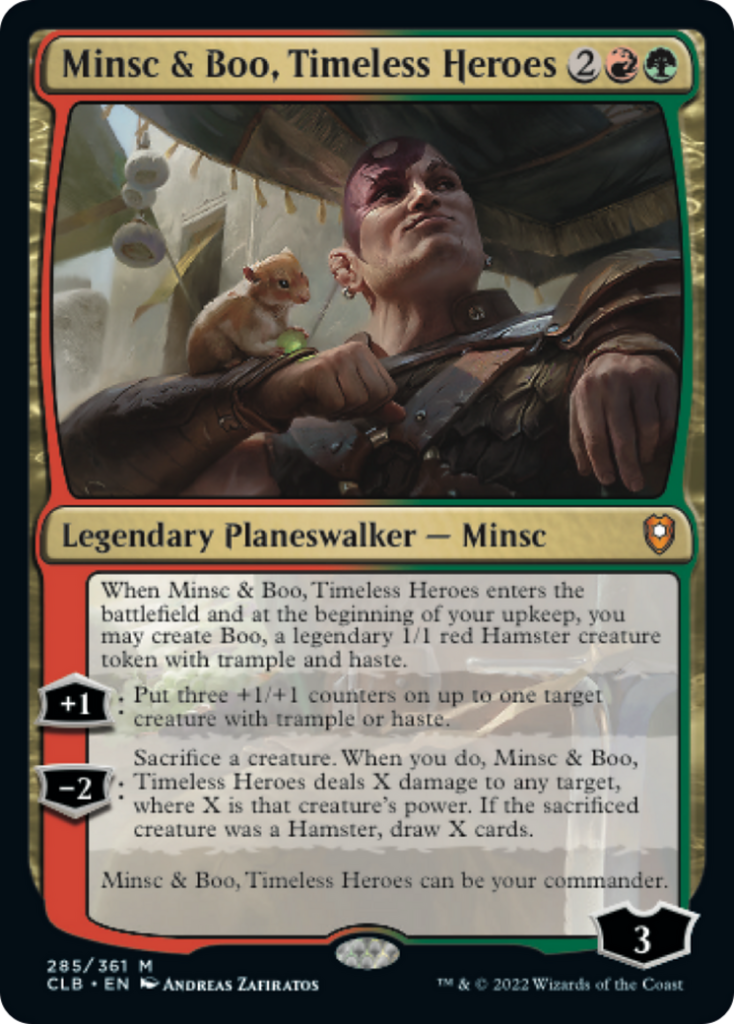
| Card Name | Purchase for MTGO | Purchase Card |
|---|---|---|
| Minsc & Boo | Check Price via Cardhoarder | Check Price via TCG Player |
Since the printing of Minsc & Boo we’ve seen the deck have some fantastic finishes in competitive events including:
September 2022
DNEELEY (Dan Neeley) | MTGO Legacy Challenge | 1st Place
MMAPSON125 (Michael Mapson) | MTGO Legacy Showcase | 2nd Place
August 2022
Rodney Bedell | NRG Series Legacy 5K | 1st Place
i. What is Green-White (GW) Depths?
Many players would argue Green-White Depths is a Legacy combo deck, but I would categorise it as a midrange deck with a combo finish. In GW Depths, you’re looking to create a Marit Lage token powered out by Dark Depths & Thespian’s Stage. As powerful as this combo is, the Green Sun’s Zenith package and creature base within GW Depths means you don’t have to rely solely on a 20/20 to win matches.
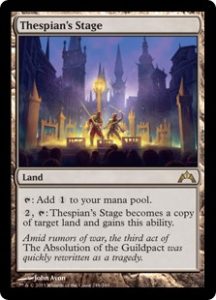
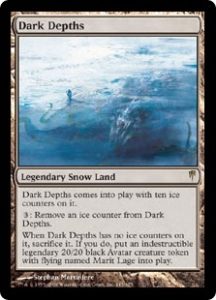
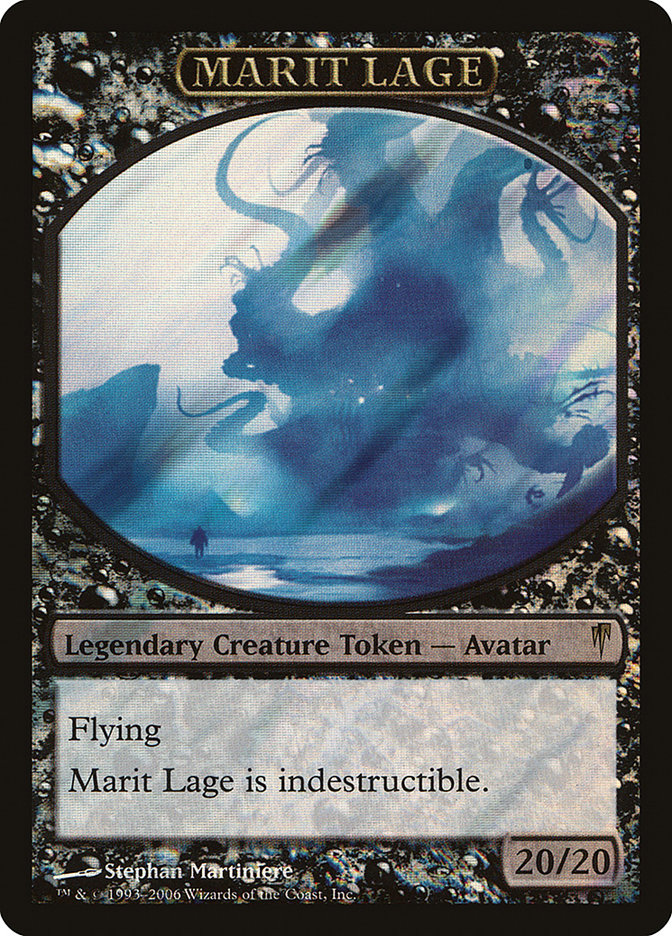
This is where I feel the green-white build has an advantage over more linear Depths versions such as Rainbow Depths and the GB based Slow and Turbo builds. This level of flexibility (midrange deck with a combo finish or vice versa) is a really appealing characteristic of the archetype. I will note that Urza’s Saga has given GB Depths a very powerful plan B, but it doesn’t have the same power & synergy the Green Sun’s Zenith package adds to GW.
Unlike its Green-Black siblings, GW Depths has a toolbox element mimicking that of Legacy Maverick. It takes advantage of Green Sun’s Zenith to consistency find heavy hitters and land tutors like Elvish Reclaimer and Knight of the Reliquary, and silver bullets out of the board in Knight of Autumn or Collector Ouphe to disrupt and shut down opposing strategies. Green Sun’s Zenith also represents protection via Sylvan Safekeeper and additional longevity in Ramunap Excavator.
The deck is very consistent and very resilient. You have access to multiple ways to find the combo in Crop Rotation, Elvish Reclaimer and Knight of the Reliquary as well as ways to protect it in Sylvan Safekeeper and Sejiri Steppe.
When the first iteration of the deck was established, you’d also have some protection via Giver of Runes and Tomik, Distinguished Advokist but the archetype has since moved away from relying on these non-GSZable creatures. In saying that, Ezra Christensen took down the Legacy SCGCON in February 2022 with this Moxless version of GW Depths feat. Giver of Runes. Do note this version was suppose to play Moxen, but Ezra wasn’t able to secure them on the day. This just shows how flexible lists can be and where players still have room for creativity.
GW Depths is much less all in and reliant on the combo compared to the GB variants of Depths. With Elvish Reclaimer and Knight of the Reliquary, you have even more threats that can close the game out in a matter of two or three turns. With Ramunap Excavator, you also have access to locking your opponent out with Wasteland, drawing an extra card each turn if you’re playing with Horizon Canopy and of course, getting back your combo pieces.
Here’s my latest decktech for Naya Depths. Thanks to Jono Yanik aka. Dreadnaught33 for the Legacy Challenge winning list!
ii. How Does the Dark Depths & Thespian’s Stage combo actually work?
Here’s a quick step-by-step guide to the combo:
- Thespian’s Stage is activated targeting Dark Depths.
- If this ability resolves, Thespian’s Stage is now a copy of Dark Depths with no ice counters on it.
Note: Thespian’s Stage doesn’t receive the ice counters because it was already on the battlefield, it did not enter the battlefield, and therefore misses out on receiving the 10 counters. An example of when a land would enter with the counters would be if you played a Vesuva, copying a Dark Depths as it enters the battlefield. - Because the controller is now the owner of two Legendary Dark Depths, they chose a copy to put into their graveyard. You can now sacrifice the original Dark Depths, leaving the copied version with no counters in play.
- The trigger of the copied version of Dark Depths now goes on the stack as it does not have any counters on it. If this resolves, you now have a 20/20 Marit Lage token and are hopefully about to win the game.
Pro Tip:
If your opponent is trying to resolve the steps above and you have access to a Wasteland effect, do not use your Wasteland during step 2 (when your opponent is activating Thespian’s Stage’s ability and targeting Dark Depths). If you Wasteland the Dark Depths in response, the Stage’s ability fizzles and your opponent gets to keep the Stage. What if I told you there is a way to get both lands off the field AND fizzle any chances of a 20/20?
Let’s skip to step 4 above, where our opponent has a Thespian’s Stage that is now a copy of Dark Depths and the ability is on the stack. This is the perfect time to Wasteland the Dark Depths. If Dark Depths leaves the battlefield before its triggered ability resolves, its owner won’t be able to sacrifice it, so they won’t create Marit Lage. Your opponent is now out 2 lands and doesn’t get rewarded with a 20/20 Marit Lage.
iii. Is Green-White Depths an expensive deck?
For most players, the copies of Mox Diamond are going to be the biggest barrier to purchasing the deck. If you’re looking to play The Tabernacle at Pendrell Vale in the sideboard, well I hope you already own a copy. Thankfully the deck doesn’t require Tabernacle as much as a deck like Legacy Lands to perform optimally, but it is a nice option against go-wide strategies. For the most part, Glacial Chasm fills the same role out of the board and if needed, a black splash for Plague Engineer showing up here and there has been a good choice to combat creature decks.
If you don’t have Mox Diamonds, check out MTGO user lactone56513’s list they were able to top 16 the Eternal Weekend (Bayou) event with or Ezra’s Mox-less list that won SCG Con Philadelphia.
If you’re on a strict budget, you could try a list that plays mana-producing, GSZ-able creatures like Noble Hierarch or Birds of Paradise. I’ve also heard solid feedback from players who’ve tried out Arboreal Grazer as a way to not only power out lands, but also have a decent blocker. You could also look into Rainbow Depths – a great ‘budget’ (around $800-900 in paper and around 530-550 tix on MTGO) option for a Dark Depths deck.
iv. Origins of Green-White Depths
The first mention of the archetype I can find is from Rodrigo Togores in August, 2019 during the Wrenn & Six era. He 5-0’ed a Legacy league then backed it up with a 3rd place finish in a Legacy Challenge.
The GW archetype generally matched up well against the field during this metagame, as the protection of Giver of Runes and Tomik lined up really well against Wrenn & Six. The maindeck was built to focus on the combo in G1 with a small amount of interaction in GSZ targets such as Qasali Pridemage, Scavenging Ooze and Gaddock Teeg. Tomik was a house in the Depths mirrors as it completely stopped an opposing Thespian’s Stage or Vampire Hexmage from targeting Dark Depths.
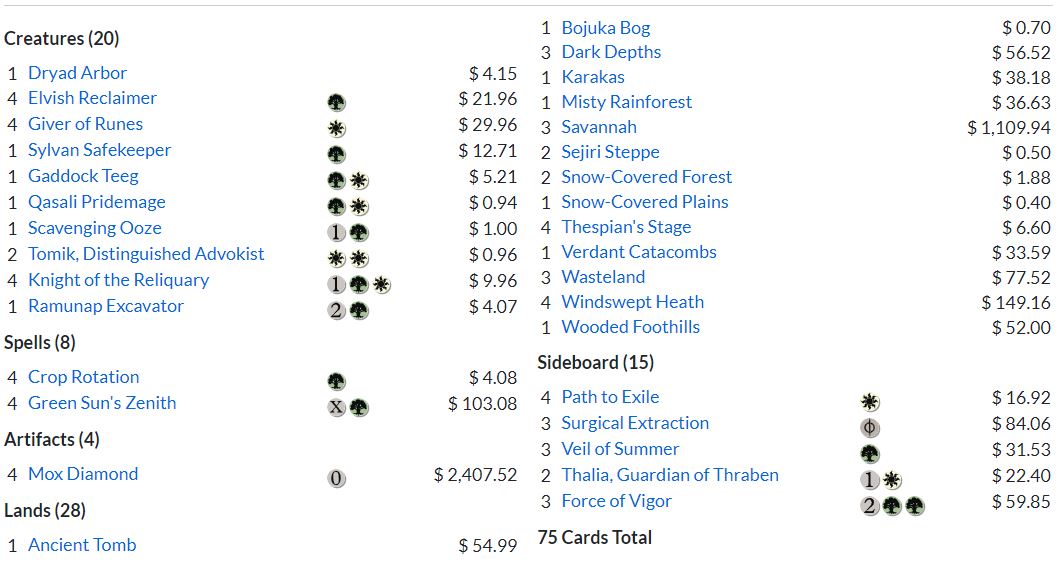
The sideboard of this deck is really clean. The Path to Exile was a strategic choice as it was cheap removal that didn’t push your opponent above 20 life. Thalia is an aggressive piece of disruption for blue-based control and combo decks and can come down as early as T1 thanks to Mox Diamond. Veil of Summer was nice against blue decks, some combo decks and even a way to deny Abrupt Decay from impacting your board. Force of Vigor is just one of the most powerful green cards printed in recent years and is fantastic against decks like Mono-R Stompy or Stoneforge Mystic archetypes.
The deck has changed a fair amount from what’s above but the core is still there. Most players moved away from protection pieces Giver of Runes and Tomik, Distinguished Advokist around the middle of 2020.
Why did the deck run Giver of Runes over Mother of Runes?
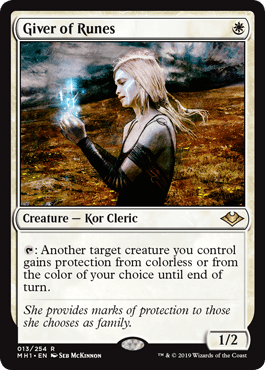

The key reason why GW Depths pilots run Giver of Runes over Mother of Runes is that it allows you to protect your Marit Lage token (and other Legendary creatures) from Karakas, a colourless source. The additional toughness Giver carries also means it survived Wrenn and Six , Plague Engineer and other -x/-1 effects like Liliana, the Last Hope and Golgari Charm. For more Giver of Runes interactions check out the list at the end of this primer.
Why run Path to Exile over Swords to Plowshares?
The short answer is you don’t want to give your opponent an extra turn by extending their life total above 20. You want to be able to make your 1 hit from Marit Lage count and skip the need to play around any sorcery speed removal during your opponent’s following turn.
If you’re going to win the game the turn after you cast a Path to Exile, the extra mana source most likely doesn’t mean anything. However, it’s always nice to have an understanding of the decks that do and don’t typically run basic lands, such as RUG Delver.
v. Why play GW Depths over GB Depths?
GB Depths has a lot going for it, especially now with the inclusion of Urza’s Saga. The black splash and maindeck hand disruption does give you a much better G1 against combo compared to GW, and allows you to clear the way against Swords to Plowshares decks like Miracles / BANT piles or disrupt other combo decks long enough to slide in for a lethal attack.
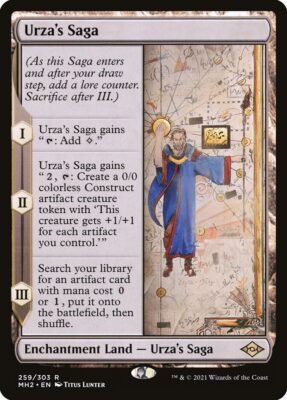
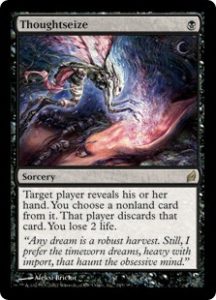
Urborg, Tomb of Yawgmoth was another reason to play GB as it shores up your manabase and allows you to have Dark Depths and Vampire Hexmage online as early as T2. Now that Yavimaya, Cradle of Growth has been printed, GW Depths has become a little faster than its previous iterations and the manabase has become noticeably smoother (lands like Dark Depths and Wasteland now tap for G mana).
Here’s a GB Depths list that I was able to trophy with at the end of 2021. This list ran a Saga package but still included a high amount of 4-ofs to keep the deck consistent. The big advantage of GB Depths is that you’re able to combo fast with early hand disruption with the now added benefit of construct beatdowns. If you’re looking for similar lists that have performed well, check out MTGGoldFish’s archive of GB Depths performances.

Bob Huang, who took down a 2019 SCG Legacy Classic with GB Depths, wasn’t a fan of the GW build at the time, stating in an Everyday Eternal podcast the black cards like Vampire Hexmage are just too strong to drop from the archetype. Hexmage trades with planeswalkers, nullifies Chalice of the Void and gives you the ability to combo as early as T2. You do lack that aggression and power in GW and you may be open to some horrible times against combo without the discard package, but post-board GW does have a very nice plan against combo. You can find Bob and the guys discussing the deck over at Everyday Eternal around the 01:00:00 mark on their 63rd podcast. Obviously the archetype has changed a fair amount since then (especially since Modern Horizon’s 2) but I think some of his core points are still relevant.
I play Green-White because it’s more a Maverick deck than a Depths strategy. It’s also favoured over other Depths decks. Right now I feel it (GW) is more of a metagame advantage. It’s quite good or bad vs the same decks as GB Depths. If you’re a player who likes to play Knight of the Reliquary then it’s better, it just wins you the Depths mirror. – Rodrigo Togores
Back in 2019 when I first put together this primer I asked Dice, one of the go-to guys of the Lands Discord channel, for his thoughts about the deck.
Note: Although this was during the Wrenn metagame, I do believe the more general advice about GW Depths is still very relevant and worth keeping even in 2022.
Why would you play GW Depths?
I have found that the main draw of the GW version is your ability to play against a deck that is gunning for Dark Depths. Having a large threat pool with protection grants you longevity and power that the more direct combo builds.
The payoff is that you are not able to threaten someone as fast. Decks that have strong interaction against creatures or decks that can attack your grave directly (Shutting off Reclaimer and Knight’s power gain) can be a mess. This means that the conventional wisdom that white sucks to play against with Lage is not really fixed, but it is mitigated by having the option of wide threats.
Another advantage is having “8” copies of Moxen. Green Sun’s Zenith lets you grab a Dryad Arbor early, granting you a lot of consistency for having 3 mana on the second turn. With the meta having slowed down a lot of late, this means you are often dropping power for the current meta threats faster and with a greater consistency than other decks. On top of that, having Elvish Reclaimer and Giver of Runes as early plays, you are not often “spinning your wheels” as all your plays demand an answer.
Reclaimer, a card that is in both builds, is just a flat good reason to play Depths. The powerful early game blocking mixed with having his effect be open after a block for either a combat trick or some form of interaction is nice. But the power of GSZ meaning this build has 8 of his really pushes things. Come to think of it, Green Sun’s Zenith really is a damn good reason to play this deck.
Why would you play GB over GW Depths?
The reason to play GB is the discard and speed. The power that is granted to you by cutting 6 to 8 discard for ramp and protection leaves you weaker to combo elements in the format. You also lack the ability to push past counters as easily via ripping apart a hand. While this can be mitigated somewhat by running Cavern of Souls, sadly the deck has a wide range of creature types and this hampers Cavern as a more wide-reaching tool. The other thing you lose is the power of Vampire Hexmage. While Wrenn is everywhere, sometimes the power of using Hexmage for the reason it was printed comes up (stripping a walker of its loyalty). White lacks this direct answer to walkers that black has access to.
What do you find are the strong and weak matchups for GW Depths?
I find the strongest matches are the more grindy midrange matches. Thanks to your more branching early options (Mox, GSZ, Reclaimer, Giver), you can force reaction that is not predictable. Also, an early threat is often stopped by Reclaimer who can block, then still use his power. Making him far, far stronger than he has any right to be.
I find this means that matches like Delver, Dredge (With “8” Crop Rotations), other Depths decks and the current Hogaak decks are advantageous.
Reanimator often comes down to the hand and the die roll. If you can get a Reclaimer live, you likely win. But that means going first. If not, you need to hold up interaction like Path or Crop Rotation and they have discard. I find this match depends on the roll of the die but it’s not horrid.
Monastery Mentor. I have nightmares about that damn deck. Going wide, disposable blockers and the ability to interact with our creatures makes this match hellish at times. They are not as fast as we are, but they have a range and reach we cannot match if they get rolling. This is not a good match. Another is Storm. You can really give them fits if you build your sideboard right but they are not as common of late, so building your sideboard to hate on an uncommon match is not great, then you face them and wish you had. Granted, Veil of Summer is helpful in making this less of a problem than it could have been.
I also reached out to Dom Harvey, an SCG circuit grinder part of Team Nova and an avid fan of GW Depths.
“GW has tools to handle the various combo decks but you can still get run over in Game 1 and then need to pick up both games post-SB (including G3 on the draw). A lot of it depends on what you want to target e.g. Leyline of the Void for Reanimator (which swings that matchup a lot)/Dredge/Hogaak.
I found the Delver matchups to be quite close and had a tough time vs the Tundra decks. I’ve seen several WG lists adopt Cavern of Souls, which improves both matchups considerably – Cavern + Palace Jailer is the best plan vs the UW decks (it’s less reliable vs Stoneblade but they are easier to beat straight up so I think that’s a wash) and Cavern + Knight (with a generally sound manabase) is great vs Delver.”
Do you side out Mox Diamond against any specific decks and if so, why?
I find that since we have 8 Moxen, you can side some out quite a bit. I often take one out against the slower matches where making land drops is important and casting a 3-drop on T2 is less so. If they have a bolt for your early Knight, you probably don’t want it. When speed is not your major priority, Moxen is less of a must-have.
The times I don’t cut it but it seems counter-intuitive is when I need an early Collector Ouphe. GSZ for Ouphe is worth having online asap against something like Mystic Forge or Urza decks.
“I think cutting Mox Diamond is fine vs grindy matchups (UW, 4C) where the card disadvantage matters and you aren’t under pressure to win quickly.” – Dom Harvey
So Dice, why play Green-White over Green-Black?
Resilience, consistency and a strong plan B. As stated above, GW Depths can play extremely well as a midrange deck and doesn’t rely as heavily on the combo as the GB versions do. In the Depths mirror, you’re also the favoured deck thanks to Knight of the Reliquary and your added protection of Tomik, Distinguished Advokist. If you feel you’re going to be facing a large amount of hate locally or online, know GW can shift its gameplan quite easily from attempting to combo off to beating down with some big, fair creatures.
Fast forward to 2021…
vi. Modern Horizons 2’s impact on Green White Depths
Modern Horizons 2 (MH2) has had a big impact on the format. MH2 has given GW Depths some new tools but also some new threats and removal for pilots to think about. Here are the 3 key cards from MH2 that GW pilots need to consider:
Yavimaya, Cradle of Growth
A green Urborg was always going to fit in nicely.
– You now have the ability to tap utility lands like Dark Depths, Maze of Ith, Tabernacle and Glacial Chasm for mana as well as sacrifice ANY of your lands in play to a Knight of the Reliquary.
– One thing to look out for is giving your opponent access to green mana. This can be key if you’re against a deck that may be playing Endurance, as you may want to rethink attacking with a creature when they have 3 open mana.
– If you’re aggressively taking your opponent off green mana, playing a Yavimaya may undo all your efforts.
– Yavimaya gives you earlier kills. Dark Depths, Thespian’s Stage and Yavimaya is enough mana to combo.
– Yavimaya, Dark Depths, Mox Diamond and Crop Rotation is enough mana to combo (float 3G, use G to Crop Rotation the Yavimaya into Stage)
Endurance
Endurance is a very powerful threat. It lined up perfectly against Delver, is a nice flash creature against control decks and can impact some combo decks.
– Endurance can give you some game against Doomsday although most pilots by now can sniff out an Endurance (you can put their graveyard on the bottom of their library in response to the Oracle trigger). Endurance also gives you an extra turn against Painter / Grindstone as you can put your graveyard on the the bottom of your library before you draw for turn.
– Endurance is great against decks like Reanimator or Oops all Spells as it gives you an out other than tutor for Bojuka Bog in response to a reanimation spell
– Endurance can put your graveyard on the bottom of your library too, allowing you to re-fetch lands or creatures with GSZ. This is a really important interaction to note.
– Be cautious of an opposing Endurance. A simple chump can give your opponent the turn they need to untap and play something like Teferi, Jace, Karakas or cast a Prismatic Ending to deal with Marit Lage.
Prismatic Ending
The best removal spell printed since Council’s Judgment if not since Swords to Plowshares. Ending is incredibly flexible and exactly why you’ll see it in the maindeck of a lot of lists. This deals with anything from Delver to Sylvan Library to Pithing Needle.
– Ending only cares about the colours used to cast this. Don’t cast this for 3 mana to deal with an opposing Thalia as you only need to use W and another colour for x
It’s great to have access to such a flexible removal spell, but I think Ending does a lot more for opposing white decks than it does to make any of our matchups better. UWx control decks having more removal in G1 for cards like Sylvan Library is a big blow to GW Depths, in my opinion one of the best cards against control strategies.
Further tricks and tips for GW/GB Depths
3 tricks with GB Depths:
1. Hexmage Murktide after blocking with Endurance 😱
2. Hexmage Chalice to 0 vs Affinity 🔥
3. Take your draw & evaluate options. If Saga is best, fetch it in draw step, get the ETB counter then MP1 you get another & can instantly create a construc
#MTG— DougesOnTwitch🎥 (@DougesOnTwitch) December 30, 2021
vii. What is a good starting point for building GW Depths in 2022? TLDR: It’s Naya (GWR) Depths.
TLDR: As of writing this, the most recent notable finish with the deck is from Jono Yanik who won the most recent MTGO Legacy Challenge. Naya has been putting up solid results for awhile now and should be considered the strongest version of the archetype.
I went undefeated today in the legacy challenge and took it down with naya depths!
R1 Red Prison 2-0
R2 Jeskai Days Undoing 2-0
R3 RG Lands 2-0
R4 BG Lands 2-0
R5 Painter 2-0
R6 UR Delver 2-1
R7 RG Lands 2-1
Top 8
T8 GB Depths 2-0
T4 UR Delver 2-1
Finals UR Delver 2-0 pic.twitter.com/PSy8eTB1Wc— Jonathan Yanik (@jyanik33) February 20, 2022
This is an interesting list as it shows the current trend to moves towards a light red splash for blast effects in the board. In the same weekend, well known GW Depths player Wara finished 2nd in the other Legacy Challenge with their take on Naya Depths.
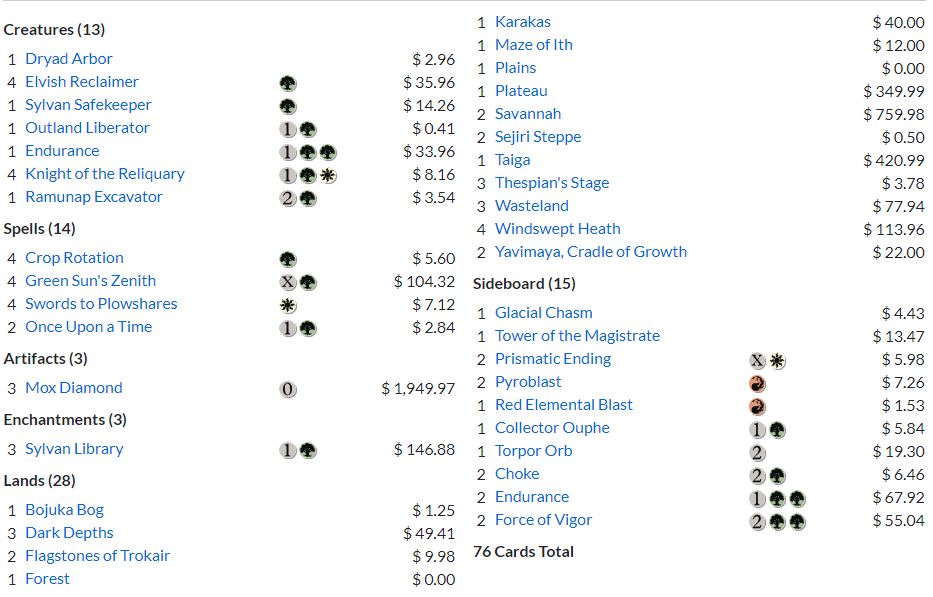
I asked Jono about his choice on Naya over GW and here’s what he had to say:
Quick and easy, why play Naya over straight GW?
Naya gives you access to Pyroblast/Red Elemental Blast easily one of the most flexible and powerful SB cards in Legacy, especially in Murktide / Oracle / Turtle format. The matchups where the blast effects really shine and where you’ll see an increase in matchup win % include:
- Delver (Note: Make sure you have access to multiple red sources in this matchup as Wasteland can play a critical role in making you stumbling with blasts in hand)
- 8-Cast
- UWx control or Days Undoing strategies
- Blue combo like Sneak & Show and Doomsday
What was your thought process on the 2 maindeck copies of Once Upon a Time?
After his Challenge win we co-hosted a streamed league and talked through some of his choices. You can find that video below:
viii. How to build Green-White Depths in 2022:
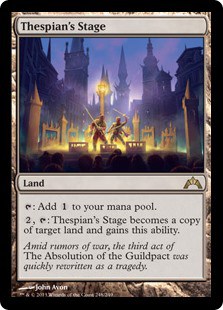
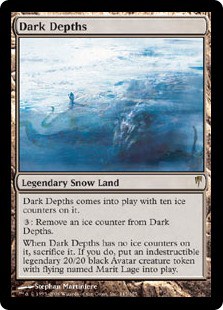
The Manabase: Combo
3 Thespian’s Stage
3 Dark Depths
This is pretty straightforward as we are still wanting to present the combo in most games without having to invest too much time and resources into finding both pieces. Most lists only run 3 Dark Depths because the deck doesn’t solely rely on winning through a 20/20 and you play enough tutor effects to find it when needed. Thespian’s Stage has a little more utility to it so playing the full playset isn’t uncommon, especially in a format with Urza’s Saga.
The Manabase: The Meat
4 Windswepth Heath
1-2 Forest
1 Plains
2-3 Savannah
1 Dryad Arbor
This is the manabase you rely on to make sure you’re able to cast your spells in the early game even without Mox Diamond. Windswept Health is your priority fetchland as it can get either basic and can fetch Dryad Arbor when needed. I like playing with 1 Plains and 2 Forests so I know I can cast all my spells through a Blood Moon or Back to Basics but I would say the average split is closer to 1/1. 3 Savannah is the sweet spot in my opinion but if you’re on a budget, I have seen lists do well that run 2 Savannah then an extra fetchland or Canopy.
If you playing Naya, I would go with a 2/1-2/1 split of Savannah, Taiga and Plateau.
2-3 Yavimaya, Cradle of Growth
1 Karakas
1 Bojuka Bog
2 Sejiri Steppe
3 Wasteland
This is the most common group of silver bullet lands run in GW Depths. They all play their part to either win you the game or stop your opponent from winning the game. Although they are only 1-2 of’s in the deck, your multiple ways of accessing them at instant speed makes them quite easy to access.
Yavimaya does a ton of work for the deck and allows you to keep hands with lands like Wasteland or Dark Depths and still be able to play out your spells. It also speeds up the deck as you now can tap Dark Depths for mana (acting like Urborg in GB Depths). As mentioned above it also allows you to sacrifice Flagstones to Knight as a value play or make use of multiple Dark Depths in hand.
Karakas is great at both keeping your legendary threats alive (Teeg or Thalia if you’re playing these in the board) while protecting you from an opposing Griselbrand or Marit Lage.
Bojuka Bog is fantastic against graveyard decks – especially when found at instant speed. It’s also a 3rd colour which can be relevant when casting Prismatic Ending
Steppe gives you another way to protect your own creatures or get through a lone blocker like Delver of Secrets or Ice-Fang Coatl. Horizon Canopy doesn’t see as much play anymore but allows you to grind out some of the longer matches and pairs very nicely with Ramunap Excavator.
Wasteland is mostly to be used aggressive to destroy opposing Karakas, Wastelands and Dark Depths but can be another win condition when paired with Ramunap.
Other lands worth exploring:
0-1 Maze of Ith
0-1 Horizon Canopy
0-1 Ancient Tomb
0-1 Blast Zone
Maze of Ith is great at both keeping opposing creatures from getting damage through and giving your own creatures pseudo vigilance (you can untap your own creature at the end of combat after damage is dealt). It forces Murktide decks to find a Wasteland and can buy the time you need to get Marit Lage online. Don’t count Maze as a land drop as I would consider it a removal spell when building my 75.
Ancient Tomb is great in budget builds without Mox Diamond. Tomb is unique because it allows players to have the combo online a turn earlier than expected (without Yavimaya). It allows you to combo off with both combo pieces in play and access a land and green mana for Crop Rotation. It also pays for Reclaimer’s ability by itself, leaving other lands open to cast further spells. Tomb also allows you to GSZ a little sooner than expected. With a Mox Diamond opening you are able to GSZ for 2 on T1, devastating against Storm if you’re landing a Collector Ouphe on T1. Even playing Tomb on T2 or 3 means you’re hitting your bullets and beaters like Knight a turn earlier than expected.
Although these are some nice advantages, I’d say the printing of Yavimaya is what’s kept Tomb from seeing too play play in 2022. The life loss can also add up very quickly and can make matchups like Delver much harder to stabilise.
Depending on your meta, I think Blast Zone is also a very powerful land to consider as it can deal with many popular threats in the format right now that GW might otherwise have a hard time dealing with.
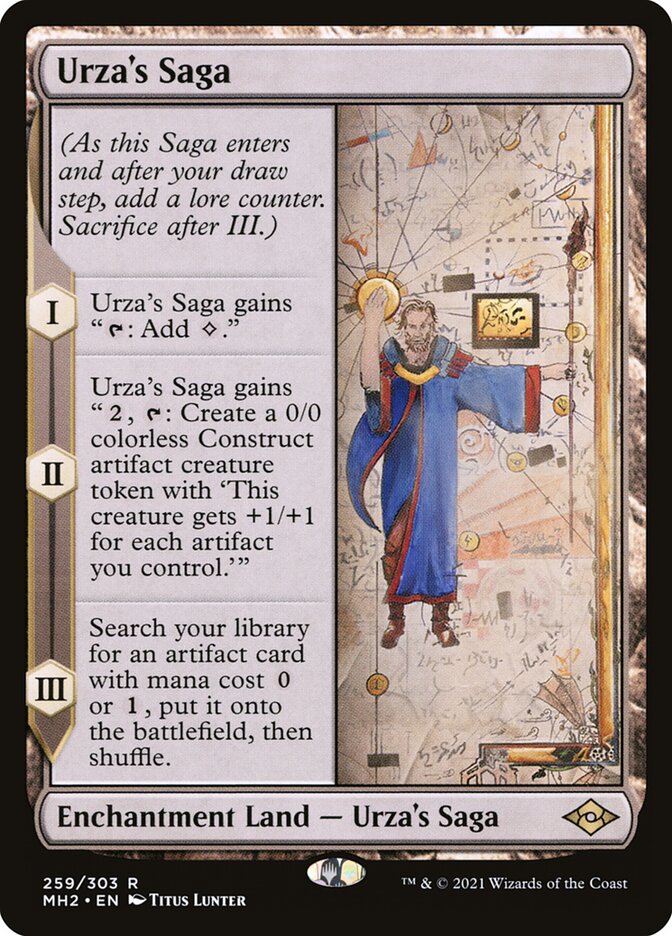
0-2 Urza’s Saga
Urza’s Saga is a really interesting one that has some mixed opinions from players. It can work towards your plan and find protection in Pithing Needle or help you grind with Retrofitter Foundry and Shadowspear. The constructs can also take over the game and with Thespian’s Stage in the deck, you can keep the ability to make them forever. I’ve found the deck to already have a great grinding plan so I haven’t tried out Saga, but some big names have been playing it so I assume they are onto something. If you’re splashing red, I wouldn’t consider also trying to fit Saga in the manabase.
Thanks to Reddit user Hmukherj for explaining this interaction between Stage and Saga:
“Rule 714.4 answers your question. Say your Thespian’s Stage that’s a copy of Urza’s Saga has its final ability trigger. In response you activate its ability, copying a Mountain. After the copy ability goes on the stack, state-based actions (SBAs) are checked. Your Saga has 3 counters on it, but since its own ability is still on the stack, you don’t have to sac it. Assuming no further interaction, the copy ability resolves. Your Stage is now a Mountain. SBAs are checked, but since the Stage is no longer a Saga, the sacrifice clause doesn’t apply any more. You don’t have to sac it. Finally, the Saga ability resolves as normal. Again, since your Stage is no longer a Saga, the ability leaving the stack doesn’t change anything. You get to keep your Stage.”
For a really good explanation of the interact, check out JudgingFTW
The big issue with Saga in GW is that you don’t really need the extra midrange firepower. You generally have better things to do than hold up the mana to activate Saga for a construct token and can be a little awkward at times.
The Creature Base:
4 Elvish Reclaimer
4 Knight of the Reliquary
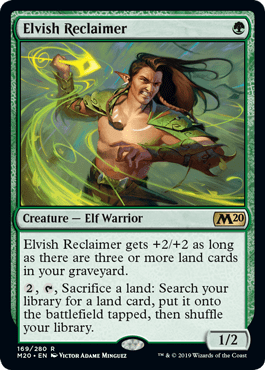

Your engine team. These two are just your best creatures for winning grindy matchups and setting up the combo all in one. The big difference is that Reclaimer’s lands come in tapped, so if you’re going for the combo over two turns, make sure you search for Thespian’s Stage first as it doesn’t matter if Depths comes in tapped after Stage is online. With a little patience, both of these threats can be online and out of bolt range from as early as T2. If your opponent has a strong plan against your combo, Reclaimer and Knight beatdown is your best route to victory. Do note that Reclaimer can sacrifice any land, making it a great combo with Flagstones and way to get under a Blood Moon by finding your basic lands.
1 Sylvan Safekeeper
1 Ramunap Excavator
Your protection spells. Safekeeper is great at keeping your creatures on the field. The ability to have protection via Green Sun’s Zenith that isn’t hit by summoning sickness makes Safekeeper’s role uniquely important. Ramunap gives you some longevity and turns on the graveyard as a resource for GW Depths. Did your first Marit Lage fall to a Swords to Plowshares? Now you can get those pieces back over multiple turns and go at it again. Ramunap can also lead to Wasteland locks or a reoccurring blocker in Dryad Arbor to buy you time against creature decks.
1 Knight of Autumn / Outland Liberator
1 Endurance
Your silver bullet package. Here to make sure you have some amount of game against nearly every deck in your 75. Endurance makes sure your opponents cannot use their graveyards as an effective resource and also helps you gain some life when it comes down to a race. Knight or Outland gives GW the ability to tutor removal for cards like Ensnaring Bridge or Blood Moon.
This is also where you can bring some deck-building creativity into your 75. What’s your local meta like? Perhaps you want to run a Scavenging Ooze or Gaddock Teeg in the 75. The mix of Green Sun’s Zenith and Crop Rotation allows you to play around with the specific targets you want in your deck to hedge against the meta you know best.
The Non-Creature Spells:
4 Crop Rotation
4 Green Sun’s Zenith
3 Mox Diamond
3 Sylvan Library
0-3 Once Upon a Time
For the most part, Green Sun’s Zenith is a delayed Crop Rotation 5-8 while still giving you outs against matchups where your silver bullets make a huge impact on the game. It also gives you a virtual 5 copies of your 1-of silver bullets so you can consistently find them. The full playsets of Crops and Zeniths allows you to not only have consistent opening turns, but they allow you to pivot your battlefield to find the right half of your deck if you’ve drawn into a hand that isn’t suited for the matchup.
Sylvan Library is most of the time your best T1 play off a Mox Diamond. Library allows you to dig deep against the decks that don’t care if you’re at 20 life or 8 life and also gains you back card advantage from Mox Diamond. With the printing of Prismatic Ending, Library has lost a fair amount of its ability to stick, so you’ll see most players be very aggressive with Library if you get to untap with it.
Once Upon a Time isn’t a staple, but you have a few players who are very high on it. It’s great at building on that consistency and digging in the mid-late game.
Here’s what RascalYote had to say about it when sums up the card nicely.
I like Once Upon a Time because it helps dig for the combo and having it in your opener lets you keep a land light or land heavy hand so it helps you both not get mana screwed or mana flooded at the same time. I tend to side out Once Upon a Time a lot. This doesn’t mean the card is bad and should just be cut. When you bring in a lot of hate from your sideboard you need cards to take out obviously and OUAT is the easiest cut as a lot of the rest of your deck is core to your game plan like cards that generate or protect a Marit Lage or a backup win condition like Knight of the Reliquary.
4 Swords to Plowshares
0-2 Prismatic Ending

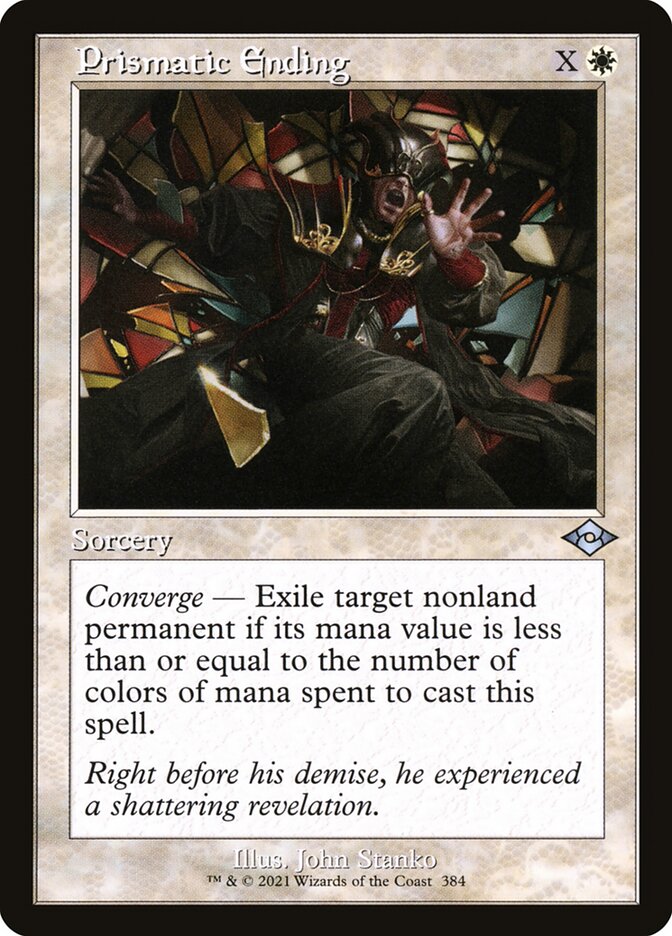
Swords to Plowshares is just the best answers to creatures in the format. The only thing I’ve considered and found to be great in Maverick is a 3/3 split on Swords and Ending. It depends on what you think you’ll be facing, as there are obviously weaknesses in both sorcery speed removal and removal that’s restricted. There isn’t a worse feeling than having a Murktide beating you down when you have an Ending or 2 in hand. I really like the flexibility of Ending and think it’s a great inclusion in the maindeck of GW Depths.
Sideboard Options:
3-4 Blast effects (Red Elemental Blast, Pryoblast)
This is where Naya has the advantage over GW. Not only are blasts great as additional removal against Delver and 8-Cast (and the best way to deal with Cannoneer), they are also effective against combo and control. It’s very hard to have a Legacy metagame where blasts are not going to be relevant, so for the most part GWR is where I’d want to be right now.
There isn’t too big of a reason to split these right now, but it does play around cards like Cabal Therapy and Meddling Mage.
2-3 Deafening Silence / Thalia, Guardian of Thraben
Deafening Silence is just your best way to slow down combo decks. Mindbreak Trap could be another option for this slot, but it’s tough to not go with the best combo-hate piece printing in white since Thalia, Guardian of Thraben. Thalia is also an option you’d see in sideboards, but sometimes she can just be too slow, especially on the draw.
0-1 Gaddock Teeg
I’m a big fan of making my GSZ package more powerful against control and combo decks. Although Teeg isn’t the same threat he used to be, I’d say he’s still a great GSZ target in the right metagame. Have a good think about his inclusion though, and where Collector Ouphe isn’t just the better hatebear to take that sideboard slot.
2-3 Choke
Although Prismatic Ending does give control more outs to Choke, this card is just a really strong way to disrupt any blue deck. My only advice with Choke is be patient and try to land one when your opponent has a few islands tapped. Obviously if it’s your only play then go ham, but patience can really reward those who have it with cards like Choke.
2-3 Endurance
Just a house. This card keeps impressing against nearly every deck I come up against. Fantastic against Delver, a strong flash threat against control to keep pressure going and also fine against a number of combo decks. I think it’s best when paired against other hate, but for now I’ve really enjoyed Endurance thanks to its versatility. It’s hard to be playing Maverick or Depths and not find the room for 4 Endurance in your 75.
2-3 Force of Vigor
Just a great way to fight against explosive decks like Lands or 8-Cast as well as other midrange decks like Death & Taxes. You might see some buzz around Seeds of Innocence which is a great silver bullet for 8-Cast, but be weary of other matchups where Force shines.
1 Collector Ouphe
One of the best if not the best silver bullets for combo and artifact-based decks.
0-1 Knight of Autumn / Reclamation Sage
Reclamation Sage is seeing more play in sideboards over Knight of Autumn because it’s much easier to cast through a Blood Moon effect. Collector Ouphe does hit your own Mox, however, this is only a small downside compared to the issues it will give your Death & Taxes, Bombermann, Storm or Eldrazi Post opponents (just to name a few). Force of Vigor is a great card to fight against the lands and 8-cast decks of the format and are also great against most of the decks Ouphe comes in against.
0-2 Torpor Orb
Orb is pretty good tech for Doomsday, Death & Taxes and other heavy ETB effect matchups. It doesn’t like up great against Uro decks but otherwise is a great way to stop opponents getting value off their creatures.
0-2 Paradox Zone
This card is pretty great against Prismatic Ending decks and other midrange matchups. It gives you another direction of attack through an enchantment which is typically hard to deal with once off the stack. You might see players also fitting into this spot Court of Grace, just make sure you’re patient when you play this as gaining back the monarch can be tough at times against BANT midrange.
Utility Lands
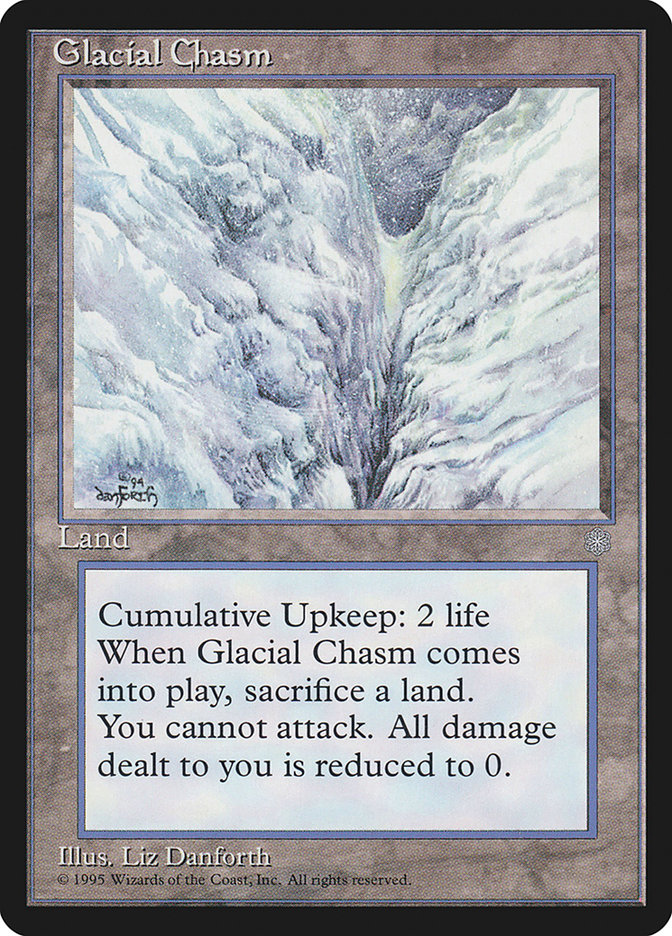
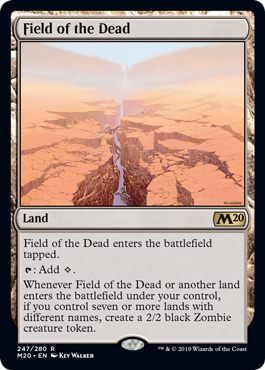
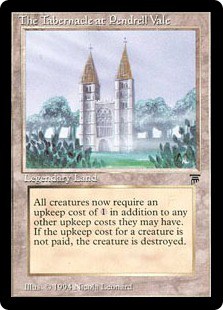
1 Glacial Chasm
Chasm is there for fast creature decks (Hogaak, Elves, 8-Cast, Madness) and can be a huge issue for opponents that aren’t ready for it. Elves and Hogaak may have Assassin’s Trophy but otherwise are in the cold.
1 Tabernacle at Pendrell Vale
Tabernacle is not a necessity and most of the time, Chasm works in the same slot. Tabernacle is really strong against opposing creature decks (Elves, 8-Cast, Madness) and can be a free win against Empty the Warrens.
1 Field of the Dead
FotD is there for the grindy matchups. It’s a great win-con against BANT Control or other UWx decks that might board into Back to Basics. Just be weary that it’s not often this deck gets to 7+ lands and isn’t either already too far behind for Field to matter or just not needed to win.
1 Tower of the Magistrate
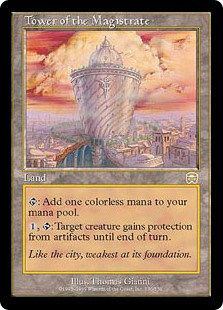
Tower is some very cool tech from sharkcaster_mage (Rodrigo Togores). It has some really cool application in Legacy right now such as;
- Removes creatures from equipment (kills Germs on Batterskull and the more popular, Kaldra Compleat
- Giving creatures protect from Baleful Strix and Thopter tokens. Great tech for 8-Cast to get through the small flyers
- Allows you to block large construct tokens and save your creatures
ix. What are GW Depths good matchups?
GW Depths tends to beat up on the other Dark Depths variants due to the midrange strategy Green Sun’s Zenith and Knight of the Reliquary add to the matchup. It has a decent matchup against most control decks but can sometimes feel like an uphill battle against the versions playing Life from the Loam. With many BANT / 4c control decks playing a mix of Swords, Ending, Karakas, Wasteland, Teferi and Jace, it can be a tough matchup to get through with creatures but patience can go a long way (mana for Crop into Steppe, setting up Safekeeper).
Some decks fold to maindeck Karakas (less now than before) and Bojuka Bog, so having multiple pseudo copies of both through Crop Rotation, Elvish Reclaimer and Knight of the Reliquary allows you to consistency find them.
I would say the Delver matchup is favoured, but it’s close – I would say around 55/45. They have the tools to fight your plan through Wasteland and post-board may have access to additional removal spells like Brazen Borrower and Submerge. Recent printings in Prismatic Ending and Endurance have made me feel pretty favoured against Delver. The deck now has access to more removal and Endurance is quite hard for Delver to beat outside of Unholy Heat. Unholy Heat is a card that’s seeing more and more play so keep an eye out for this, as it’s also a great answer for both Reclaimer and Knight.
As I said above vs. UWx control, Sylvan Safekeeper plays a huge role in the white matchups where Swords to Plowshares is the main removal spell. Against these types of decks I would say the big key is patience and trying to set up a situation where you can GSZ for Safekeeper in the mid-late game rather than aggressively going for the combo in the early game.
GB Depths variants are good matchups, as well as Dredge and other graveyard-based decks. Hogaaak decks are good matchups if they don’t have a fast start with a Altar of Dementia draw or if you’re soft on interaction. GW is better vs Storm than regular Depths decks but worse vs Sneak Attack decks. I’m not sure on the Miracles matchup – I think GB is better but it depends how many Terminus your opponent gets. – Rodrigo Togores
x. What are Green-White Depths bad matchups?
Doomsday is a tough matchup, as your combo hate other than Endurance doesn’t line up too well. If you’re looking to sideboard for Doomsday, find cards that have merit in other matchups like Torpor Orb, further copies of Endurance or blast effects.
Without hand disruption, you do have a tendency to have a weaker combo and control matchup compared to GB Depths, but your Green Sun’s Zenith package acting as Gaddock Teeg & Collector Ouphe 2-5 does give you some outs to combo decks like Storm. Against forms of fast combo that rely on the graveyard, you have the G1 out of Crop Rotating into Bojuka Bog to catch your opponent at the right time (going for a Reanimate target / trying to win through a Past in Flames line, hitting enough against Dredge that you buy yourself time to combo off).
Sneak and Show (S&S) is another deck that GW Depths is not favoured against. You don’t have enough speed bumps in G1 like Thalia, Guardian of Thraben and heavily rely on comboing off faster than them in G1. You may have access to your maindeck Knight of Autumn to hopefully take out a Sneak Attack or, if you’re lucky enough, Omniscience. Your 1 copy of Karakas does also play a part against Reanimator and S&S in stealing some games where they’ve tried to get one creature in play and ride that to victory. In G1 against most combo decks, you’ll want to apply some disruption but mainly focus on comboing faster than them (easier said than done).
Prismatic Ending and Endurance has added another level of ‘what to play around’ in certain matchups. These cards can give you some headaches when knowing when to combo off and how much protection you’ll need over x amount of turns. There’s no worse feeling that having an Endurance stall your win then losing your 20/20 to a Jace / Teferi bounce or Prismatic Ending. It’s not easy to play around, but Steppe can really help with shutting down options from your opponent.
xi. GWx Depths: Why splash a colour?
Many players like to try out a 3rd colour in GW Depths, so I’ve found some good examples of each archetype. Primastic Ending is a big winner for each additional colour you splash, making it a little easier to harness the full amount of power that card has to offer.
Abzan Depths
Zhinonono | 24th Legacy Challenge | Decklist
Plague Engineer is a pretty big reason to be splashing a colour in GW Depths. You can struggle if you allow a deck like Goblins or Elves to go wide, and although I’d consider these good matchups, it’s nice to have something in the board that really impacts their ability to do so. Abrupt Decay used to be a big reason to splash black, but with Prismatic Ending in the format, it’s just not needed. Abzan doesn’t see too much play however, as you also have good outs to these types of decks with lands such as Tabernacle, Glacial Chasm and Blast Zone.
BANT Depths
Duckduckmongoose | Legacy League 5-0 | Decklist
Uro, Titan of Nature’s Wrath:
Uro is a midrange machine just on its own. It’s a nice GSZ target when your opponent is pressuring you hard and also a threat opponents have to answer as quickly as possible before you drown them in card advantage and pressure. I could see matches where you don’t even need to rely on your other GSZ targets or combo and just grind with multiple Uro’s.
Flusterstorm, Meddling Mage:
These cards do give the deck a little more chance against combo. Flusterstorm can also be used defensively against opponents removal so had a fair amount of flexibility to it. Access to Meddling Mage gives you much more play against namesake decks like Show & Tell and Doomsday.
Just like Abzan, BANT doesn’t see too much play either. It’s always great to see players testing out new variants of Depths (and doing well with them) but the most popular versions by a fair margin are GW and Naya.
Naya Depths
Dreadnaught33 | 1st Place Legacy Challenge | Decklist
Wara | 2nd Place Legacy Challenge | Decklist
Sharkcaster_Mage | 7th Manatraders Series | Decklist
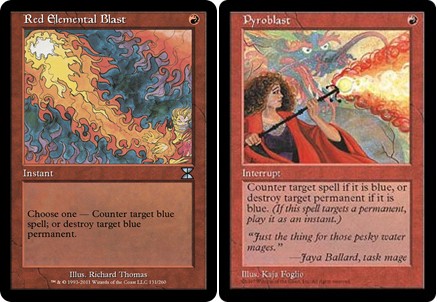
Pyroblast and Red Elemental Blast out of the board gives Depths some ability to either fight on the stack or get rid of nasty permanents such as Back to Basics or threats like Murktide Regent or Kappa Cannoneer (on the stack). Blast effects also improve your Doomsday matchup and move Delver to a favourable matchup to a version of the deck that can fight Delver’s best starts (which can be tough when on straight GW). Adding in these cards comes at a very low cost and the affect they have on a large portion of matchups far outweighs any downside.
The three players mentioned above are well versed with GW Depths so it’s really cool to see them testing out Naya and showing how it’s currently better positioned than straight GW.
In regards to further red cards, there are a few that have been in discussions. Kloyths and Meltdown are the two cards that come to mind when thinking of further red cards, or a sweeper effect in End the Festivities or Pyroclasm. For now, the small splash is great as most of the time you can hide the fact your 3 colours in G1 and have blasts post-board that your opponent might not expect.
xii. Sideboarding with GW Depths
One of the key decisions with sideboarding is are you the beatdown? Knowing if you should be going all-in on the combo or if you should be playing a more control, midrange role in each matchup is going to take a huge amount of stress off your sideboarding considerations.
Silver bullets are what I tend to look at first as they can be easy cuts. These include:
Creatures: Sylvan Safekeeper (matchups where I don’t care about removal) Ramunap Excavator (basic heavy decks, fast combo) Knight of Autumn (no artifact / enchantment targets)
Non-Creature: Prismatic Ending (fast combo) Swords to Plowshares (creature-less combo, Sneak & Show) Sylvan Library (aggressive creature decks where life total matters, fast combo) Crop Rotation (Blue decks)
Lands: Bojuka Bog (any deck that doesn’t use their graveyard as a resource) Maze of Ith (non-creature decks), Karakas, Dark Depths (other Depths / Wasteland decks where I’m less inclined to go for the combo), Wasteland #3 (basic heavy control decks), Steppe (same as Safekeeper) #2
Note: When siding our lands, also consider how many are left in the deck for Mox Diamond.
Here’s some general advice for sideboarding against different types of decks in Legacy
Combo:
You need to combo quicker than they can and thankfully you have some speed bumps out of the board to help (Deafening Silence, Collector Ouphe, Endurance, blast effects)
Most likely siding out your bigger threats in Knight of the Reliquary
Control:
Mox Diamonds can most likely be dropped here. The early card disadvantage isn’t optimal and you’re not looking to combo out as fast as possible. This is a matchup where you want to get your opponent trading resources with your fair strategy and then hopefully comboing out in the mid-late game (unless you find a route to ride Reclaimers and Knights to victory).
Midrange:
Side out 2/3 of your Dark Depths as you’re most likely not going for the combo until you’re very much in the clear. These are going to be grindy games so Sylvan Library and your tutor creatures will be doing a lot of work. Endurance tends to be a house in these matchups. It’s not really a threat you care about but your opponent is going to have to deal with it at some point, meaning less removal for your actual threats.
I may put together a real sideboard guide for GW Depths in future, but I’m not the biggest fan of exact guides as the metagame shifts so frequently. Here are some good resources for sideboarding with GW Depths (some may be old but the general advice is evergreen:
Through the Looking Glass: GW Depths
GW Depths Rambling by RascalYote
Deck Guide: Legacy GW Reclaimer
GW sideboard guide by Michael Mapson
BANT Mav-Depths sideboard guide by Dreadnaught33
This is a little dated, but the core information here is great. A big thanks to Dylan and his insights into boarding (found below).
Talked through a little of this and I think this is mostly reasonable. Probably fundamentally misunderstanding at least a couple of these matchups, I've been playing too much AFR this last week instead of Legacy.
Would love feedback on what you'd do differently. https://t.co/jvFKFrOZZJ pic.twitter.com/BrU4m1HVf4
— (((Dylan Lerch))) (@dtlerch) July 17, 2021
xiii. GW Depths Tips & Tricks
Thespian’s Stage & Wasteland
If your opponent targets your Thespian’s Stage with Wasteland and there is a basic land on the battlefield, you can activate Stage, copy the basic land and then let the Wasteland’s activated ability resolve… well, kinda. Because Thespian’s Stage is now a basic land, Wasteland’s ability fizzles and you get to keep your manabase intact.
Dark Depths & Blood Moon


Under the latest ruling, if you play a Dark Depths with a Blood Moon effect already on the field, then the Depths enters as a Mountain without any counters on it. This means if you then destroy the Blood Moon (or Magus of the Moon) then the Dark Depths will instantly trigger.
Ramunap Excavator
If you’ve already used a Bojuka Boj or Sejiri Steppe once, you can squeeze out another activation by Wastelanding your own Bog or Steppe and then replaying it from your graveyard thanks to Ramunap, triggering them once more. This type of play is also useful with Karakas if you’re needing to get two Legendary creatures off the field in one turn OR hold up Karakas after using it once. Dryad Arbor & Ramunap also mean you have a chump blocker every turn, but with the current meta heavy on cheap removal, Wasteland and -x/-x effects, I don’t see this being too relevant right now.
Sylvan Safekeeper
Safekeeper can give you some nice outs by sacrificing all your lands to alpha swing with Knight of the Reliquary. It also allows you to sac a land like Bojuka Bog to then replay it with Ramunap and get an additional trigger.
Flagstones of Trokair

Multiple Flagstones means you can get more lands in the graveyard than your opponent many think you can. Below is a cool spot where my opponent post likely felt I couldn’t get Reclaimer to a 3/4 (interesting attack as Crop Rotation works out to the same and blocking then fetching for Steppe also works in my favour)
1/2 Reclaimer with only 1 land in the graveyard?🤔
Flagstones: "No worries"🔥Getting Steppe would have worked as well but I valued keeping both copies in my library.
GW Depths is just so enjoyable.🏆
Oh and a sneak peak into a little project half-way done ✍️#MTG #MTGLegacy pic.twitter.com/m4hvlwX0Bs
— DougesOnTwitch🎥 (@DougesOnTwitch) July 26, 2021
Blast Zone & Thespian’s Stage
If you need to deal with a bunch of tokens and have some time on your side, you can copy Blast Zone with Thespian’s Stage which becomes a Blast Zone with no counters on it. This means you now have an answer to destroy all 0 CMC permanents on the field. Just look out for your own Mox Diamonds.
Maze of Ith
Maze isn’t only for defence. It can also be used to give your creatures psuedo-vigilance, allowing you to attack and then use a tap ability of Elvish Relclaimer or Knight of the Reliquary.
After a creature has dealt damage, it’s still declared an attacking creature. This means you can:
- Attack with a Knight of the Reliquary
- Deal damage and then at the end of combat,
- Untap the Knight. You now have kept pressure on whilst being able to Wasteland your opponent or keep Knight open during your opponent’s turn.
Giver of Runes
Although old tech, it’s worth showing some of the advantages of Giver of Runes. Just so players are clear on what some of the more popular colourless cards are in Legacy, here’s a list of things you can give protection with other than Karakas:
- Maze of Ith
- Barbarian Ring & Cabal Pit
- Kozilek’s Return
- Thespian’s Stage & Wasteland (if an opponent is trying to target your Dryad Arbor)
- Eldrazi such as Thought-Knot Seer
- Walking Ballista and other artifact creatures like Phyrexian Revoker
- The 2 damage from Sword of Fire & Ice
xiv. GW Depths FAQs
When do you side out Mox Diamonds?
Let’s get one thing clear. Mox Diamond is card disadvantage and a pretty horrible top deck . Without the ability to recoup that card loss back quickly with a card like Dark Confidant, it’s left up to cards like Sylvan Library or Ramunap Excavator to regain that loss later in the game. Yavimaya has also taken the pressure off needing Mox Diamond in the early game for colour consistency as the manabase is now much more forgiving and the deck isn’t playing mana hungry cards like Tomik (WW) anymore.
I know some players take out some number of Moxen against Death & Taxes due to Phyrexian Revoker and Flickerwisp, but having a mana source that cannot be hit by Rishadan Port or Wasteland needs to be taken into consideration when looking to go this route, too. Dan Neeley (DNEELEY on MTGO and a GW Depths enthusiast) said he usually sides out 2 Mox Diamond out vs control decks and the mirror matches.
Mox Diamond is there for the matches where you really want to have an impact on the early game (T1 Thalia) or combo off as fast as possible. If you believe you’re going to be slowing down and playing a more midrange plan where the card disadvantage is much less desirable, I’d consider dropping Mox.
I’ve seen some lists run Flagstones of Trokair. Is this normal?
Flagstones is a great way to get value out of Elvish Reclaimer and Crop Rotation. Flagstones is also now a land that can be sacrificed to Knight of the Reliquary thanks to Yavimaya, Cradle of Growth.
Riftstone Portal is a land that showed up in some old lists but now with Yavimaya, I would say it’s no longer needed.
Why play Deafening Silence over Thalia, Guardian of Thraben?
It really comes down to what you believe is better for your meta and your playstyle. Thalia is much easier to protect with Safekeeper, Karakas and Steppe and can also pressure your opponent, which is important against combo archetypes. The big advantage of Deafening Silence comes down T1 which is vital against the decks you want it against and can be harder to remove from the board compared to a creature (Ruby storm is a good example where they can kill your hatebears through Grapeshot). Being a T1 play is the main reason I like Silence for combo. Although you can technically get Thalia onboard on T1 thanks to Mox Diamond, I don’t want to take that risk of needing both pieces.
xv. Recent notable finishes & decklists for GWx Depths
2022
July 2022 | Gabriel Ebady | 1st Place Buffalo Chicken Dip Legacy
June 2022 | Alopcas | 1st Place Legacy Challenge
May 2022 | Rodney Bedell | 1st Place SCG CON Pittsburgh
May 2022 | DNEELEY | 4th Place Legacy Challenge
April 2022 | Michael Mapson | 1st Place SCG CON Pittsburgh
April 2022 | Bill Comminos | Buffalo Chicken Dip Legacy 8
February 2022 | Dreadnaught33 | 1st Place Legacy Challenge
February 2022 | Wara | 2nd Place Legacy Challenge
February 2022 | Sharkcaster_Mage | 7th Manatraders Series
February 2022 | Ezra Christensen | 1st Place SCGCon (Moxless Green-White)
February 2022 | Duckduckmongoose | 6th Legacy Challenge
February 2022 | Didackith | 1st Legacy Challenge
February 2022 | DNEELEY | 4th Legacy Challenge (Green-White)
2021
July 2021 | Legacy Challenge Top 8 | Michael Mapson
July 2021 | Legacy Preliminary 1st Place | Capriccioso
June 2021 | Legacy Challenge 17th Place | Ozymandias17
June 2021 | Legacy Challenge 5th Place | Ozymandias17
June 2021 | Legacy Challenge 2nd Place | Sharkcaster_Mage
June 2021 | Legacy Preliminary 1st Place | Capriccioso
Pre-Modern Horizons 2
Green-White Depths
Wara | Legacy Challenge 8th Place | Decklist | Legacy Challenge 21st Place | Decklist
Lynnchalice | Legacy Challenge 12th Place | Decklist
PhilLesh | Legacy Challenge 8th Place | Decklist | MTGO League 5-0 | Decklist
RascalYote | Legacy League 5-0 | Decklist
Dreadnaught33 | Legacy League 5-0 | Decklist
Scifiemperor | Legacy League 5-0 | Decklist
Abzan Depths
Luinil | Legacy Challenge 11th Place | Decklist
Pastratta | Legacy Challenge 11th Place | Decklist
Zhinonono | MTGO League 5-0 | Decklist
Wara | Legacy Challenge 1st Place | 8th Place Decklist | 21st Place Decklist | League 5-0 Decklist
LynnChalice | Legacy Challenge | 9th Place Decklist | 11th Place Decklist | 23rd Place Decklist
xvi. GW Depths Coverage & Resources
For current GW Depths and other fair deck content, make sure you’re subscribed to my YouTube channel!
Articles Mentioned in Primer:
Through the Looking Glass: GW Depths
GW Depths Rambling by RascalYote
Deck Guide: Legacy GW Reclaimer
Who’s The Beatdown? – Star City Games
Streams:
GW Depths league Playlist | DougesOnTwitch
GW Depths MTGO League: Co-host Dom Harvey | Jarvis
GW Depths MTGO League | Michael Mapson
GW Depths 5-0 MTGO League | Rodrigo Togores
GW Depths matches by archetype:
Delver:
GW Depths vs. Jeskai Saga
GW Depths vs. RUG Delver
GW Depths vs. RUG Delver
GW Depths vs. RUG Delver
GW Depths vs. UR Delver
Tribal / Creature based:
GW Depths vs. Elves
GW Depths vs. Elves
GW Depths vs. Goblins
GW Depths vs. Foodchain Goblins
GW Depths vs. Death & Taxes
GW Depths vs. Esper Vial
GW Depths vs. Deadguy Ale
GW Depths vs. Affinity
GW Depths vs. Affinity
GW Depths vs. Merfolk
GW Depths vs. Merfolk
GW Depths vs. Jund Hogaak
GW Depths vs. Jund Madness
GW Depths vs. Jund Madness
Combo
GW Depths vs. Sneak & Show
GW Depths vs. UG OmniTell
GW Depths vs. Mono-B Reanimator
GW Depths vs. Ruby Storm
GW Depths vs. Ruby Storm
GW Depths vs. Painter
GW Depths vs. Painter
GW Depths vs. Painter
GW Depths vs. Painter
Control / Midrange
GW Depths vs. BANT Control
GW Depths vs. BANT Control
GW Depths vs. BANT Control
GW Depths vs. BANT Control
GW Depths vs. BANT Control
GW Depths vs. Jeskai Control
GW Depths vs. BUG Midrange
GW Depths vs. BUG Midrange
GW Depths vs. GW Depths
GW Depths vs. Lands
GW Depths vs. Lands
GW Depths vs. Dice Factory
Paper Coverage:
Dominic Harvey | GW Depths vs. UWR Mentor | SCG New Jersey
Michael Mapson | GW Depths vs. RUG Delver | SCG New Jersey
Podcasts:
Dark Depths podcast feat. LynnChalice
Dark Depths podcast feat. Douges & Adam (Lands vs Depths)
Discord:
Here you can find the Lands Discord channel with a section for GW Depths.
xvii. Conclusions:
One thing I will say about GWx Depths is that there is room for innovation. Due to the amount of tutors for both lands and green creatures, you can get pretty creative with your silver bullets. GW Depths does has a relatively tight shell, but you can make a handful of changes based on your local metagame without impacting the main strategy of the deck.
Recently I’ve noticed some card choices that consistency differ from player to player:
- Maindeck or sideboard copies of Prismatic Ending
- Maindeck copies of Once Upon a Time
- Maindeck or sideboard copy of Knight of Autumn (some players opt for Outland Liberator)
- Field of the Dead in the sideboard for grindy matchups (I’ve been finding this a nice way to fight against those relying too heavily on Back to Basics as a lock piece but it can be tough getting to 7 lands)
- Maze of Ith as a tutor target (great against aggressive decks, equipment decks and also synergies well with our own creatures like Knight and Reclaimer)
- Additional graveyard hate in the board to compliment Endurance (Leyline of the Void, Surgical Extraction)
- Urza’s Saga in the maindeck with a small to medium package (Retrofitter Foundry, Pithing Needle, Expedition Map, Shadowspear)
- A red splash for blast effects and a consistent 3rd colour for Prismatic Ending
I think the above points highlights the level of opportunity in GW Depths for tweaking the list to suit your play style.
GWx Depths is a very viable strategy in the current (2022) Legacy format. You’re only going to become better with the archetype through making the deck yours and playing with it continuously against a range of Legacy decks. Although there is a cost barrier to entry, see if you can borrow some of the Moxen or other expensive cards from local players in your community!
This and all content on the GreenSunsZenith.com is freely available content, however if you would like to contribute support, you can visit my Patreon above or buy me a coffee via my Ko-Fi proifle. Thanks for reading and please let me know if you’d like any further questions answered through the comments below.

